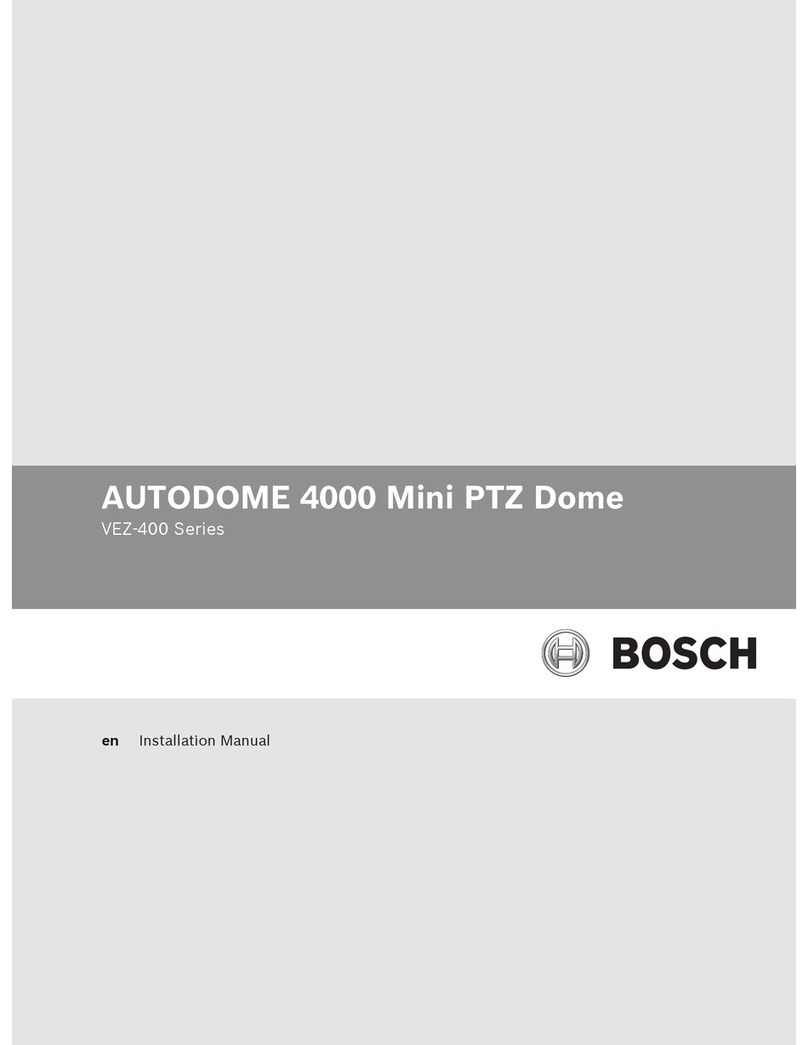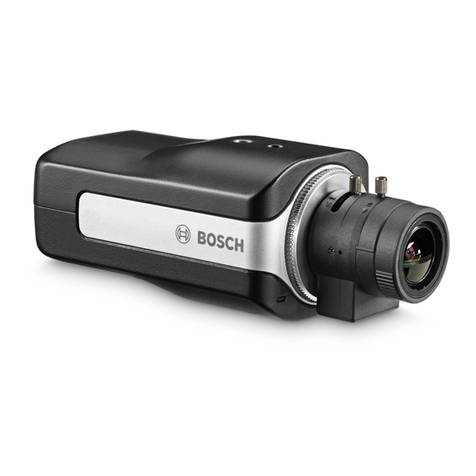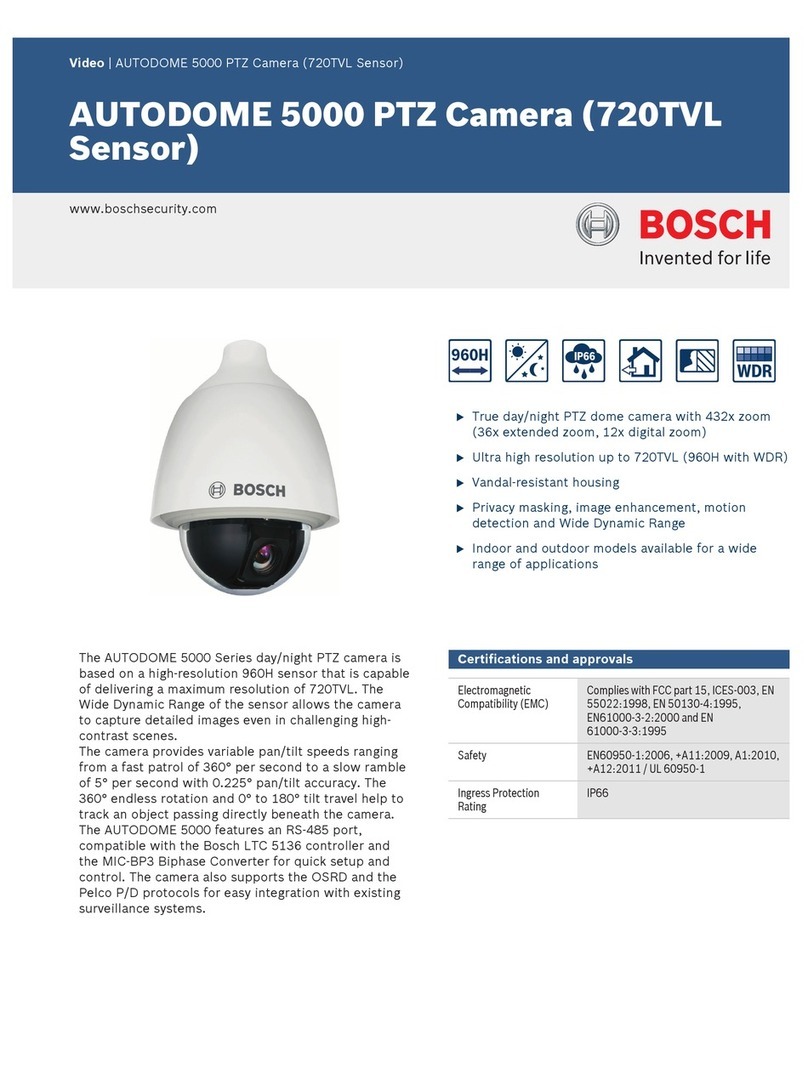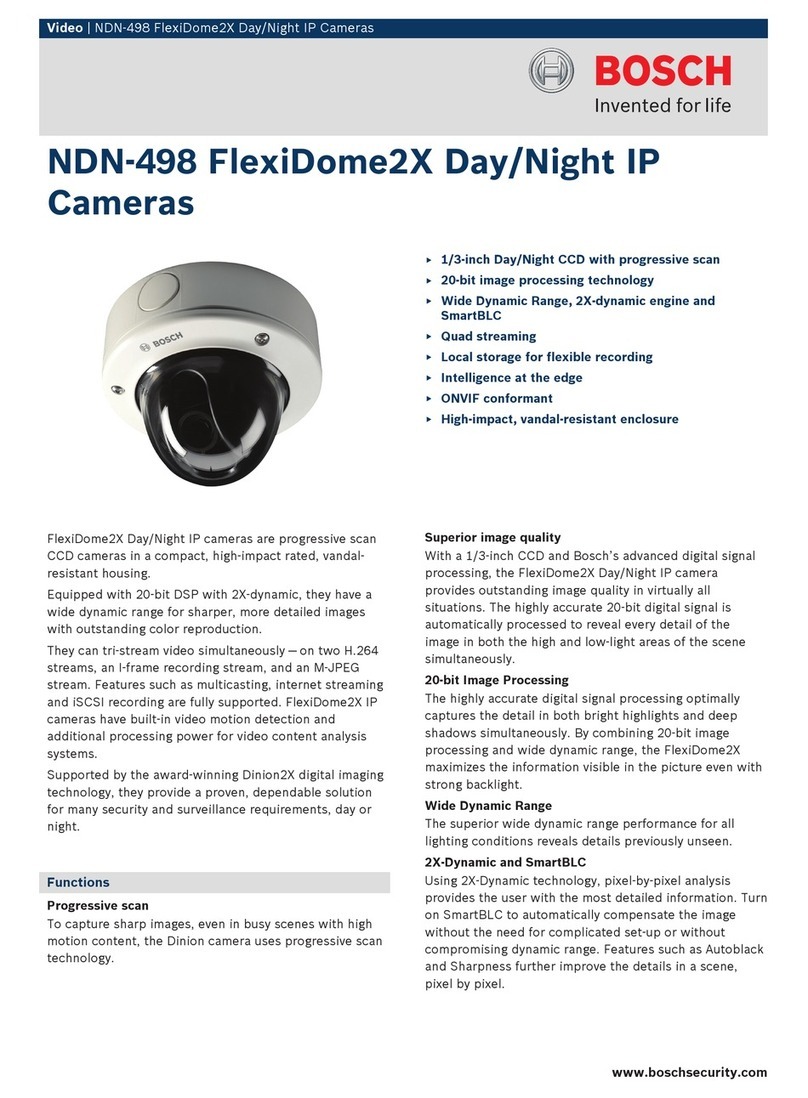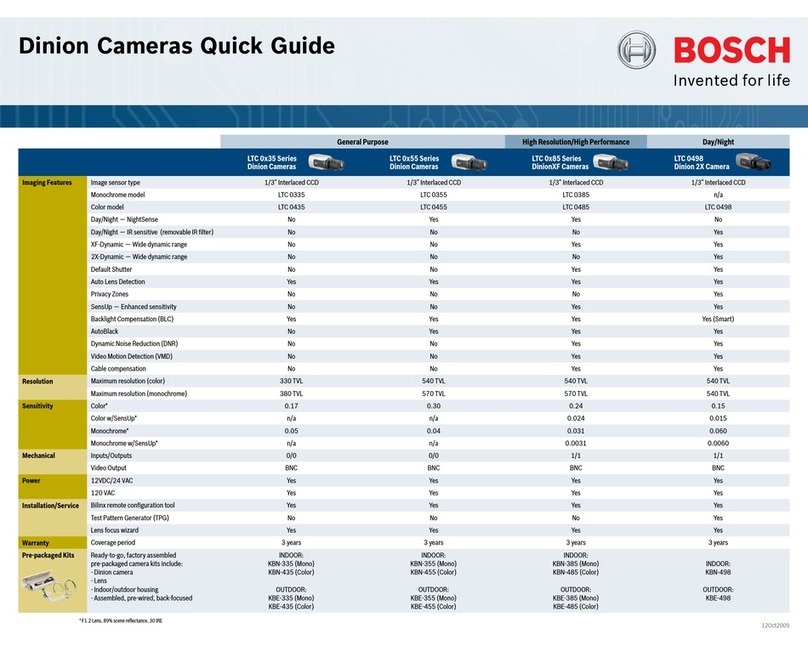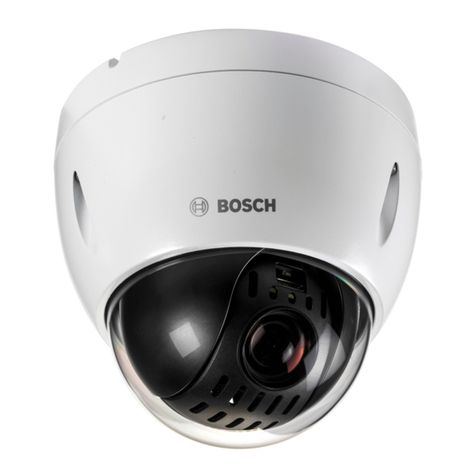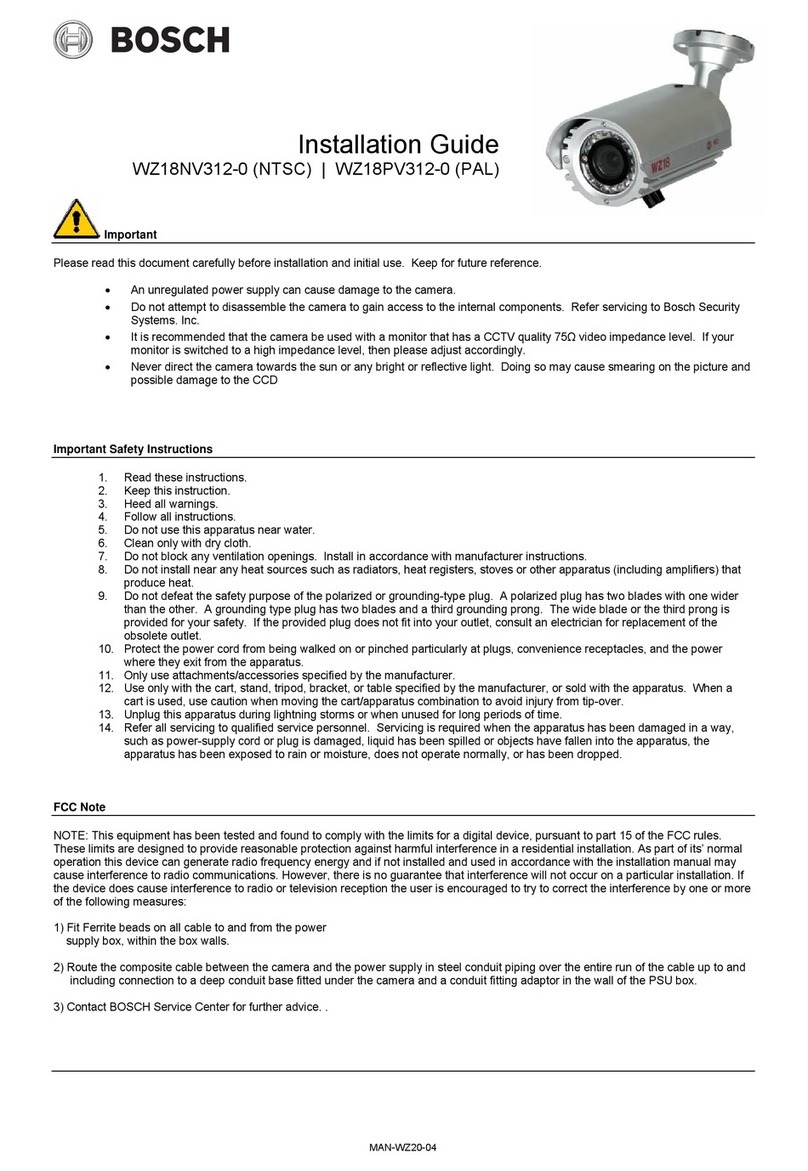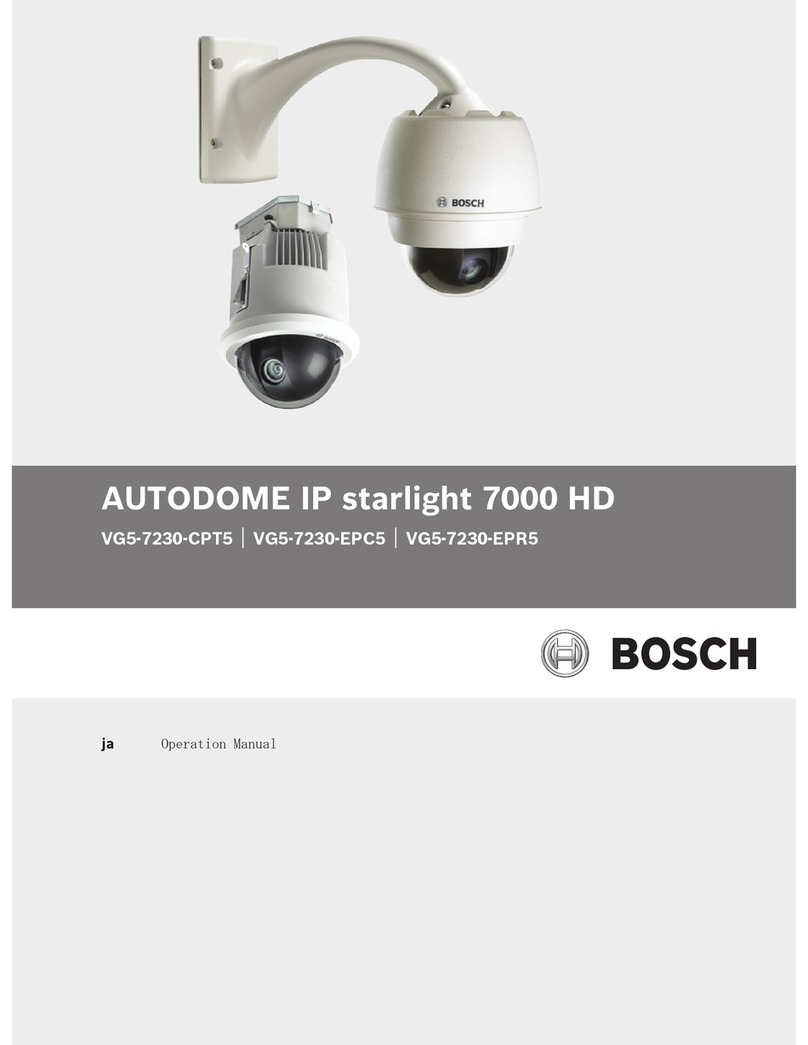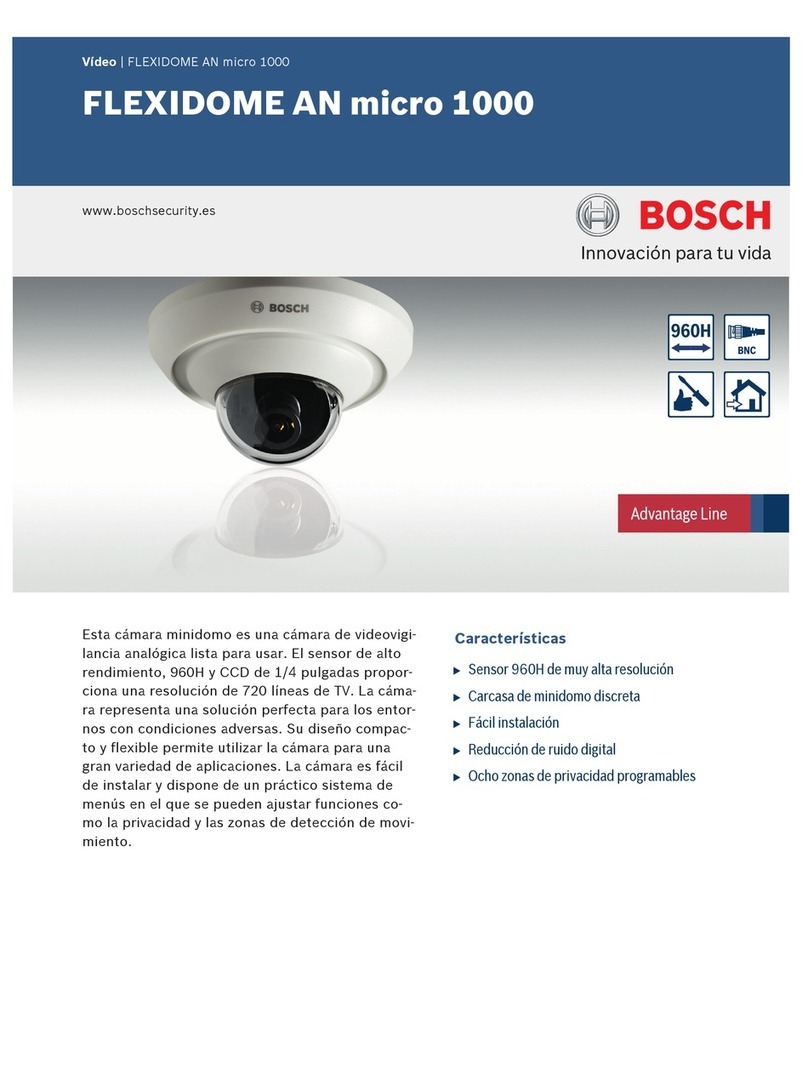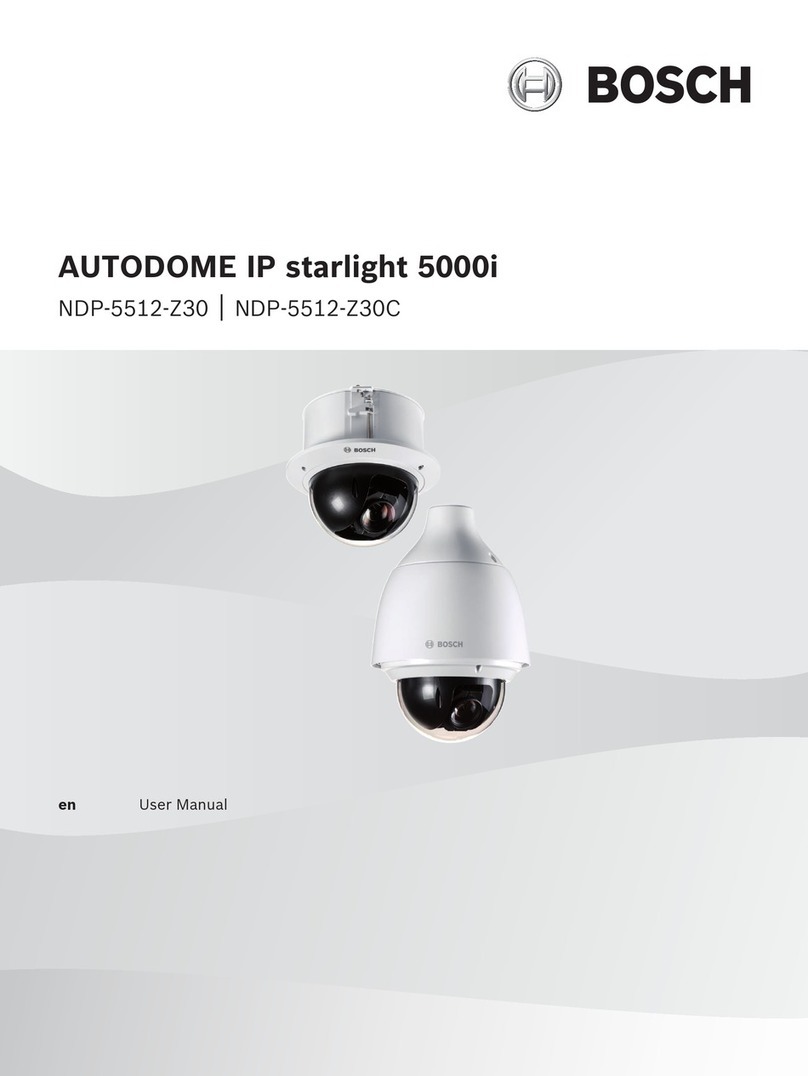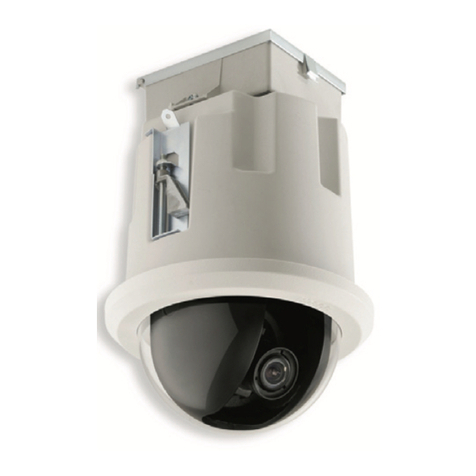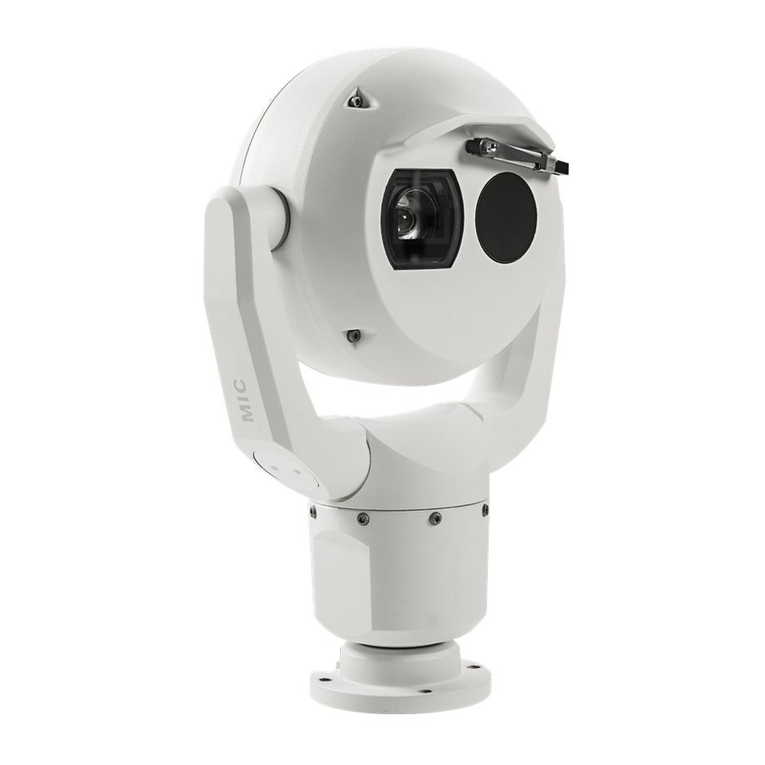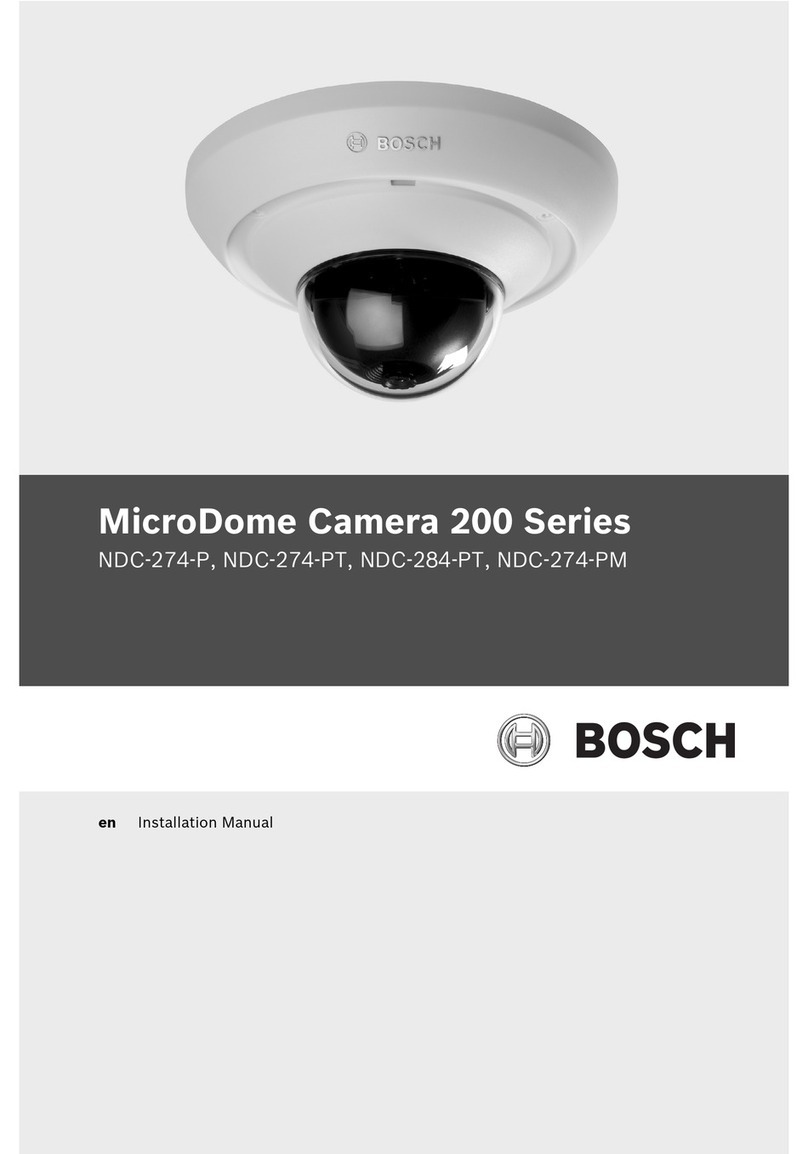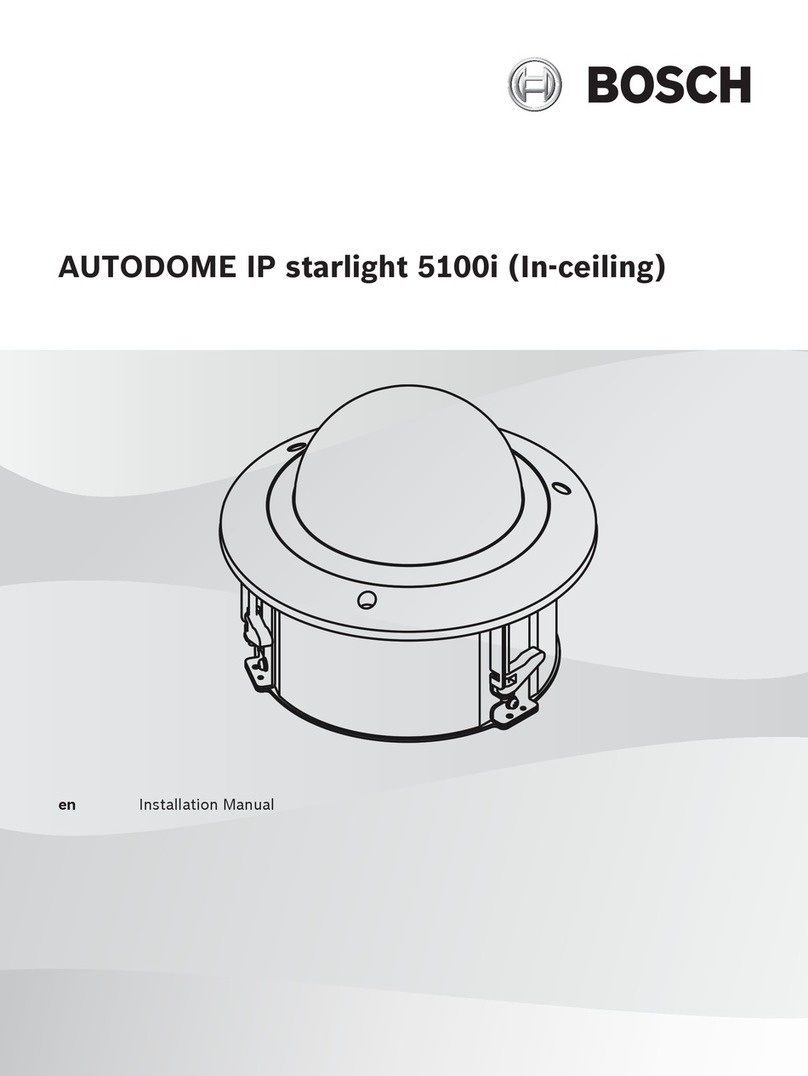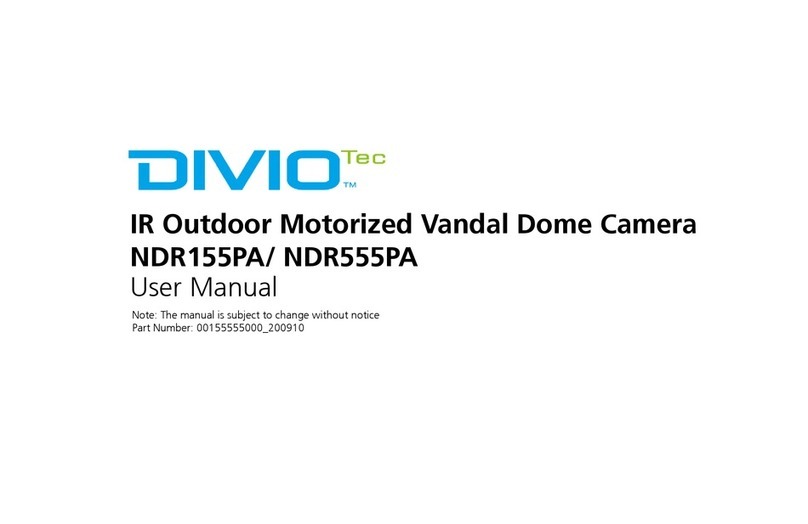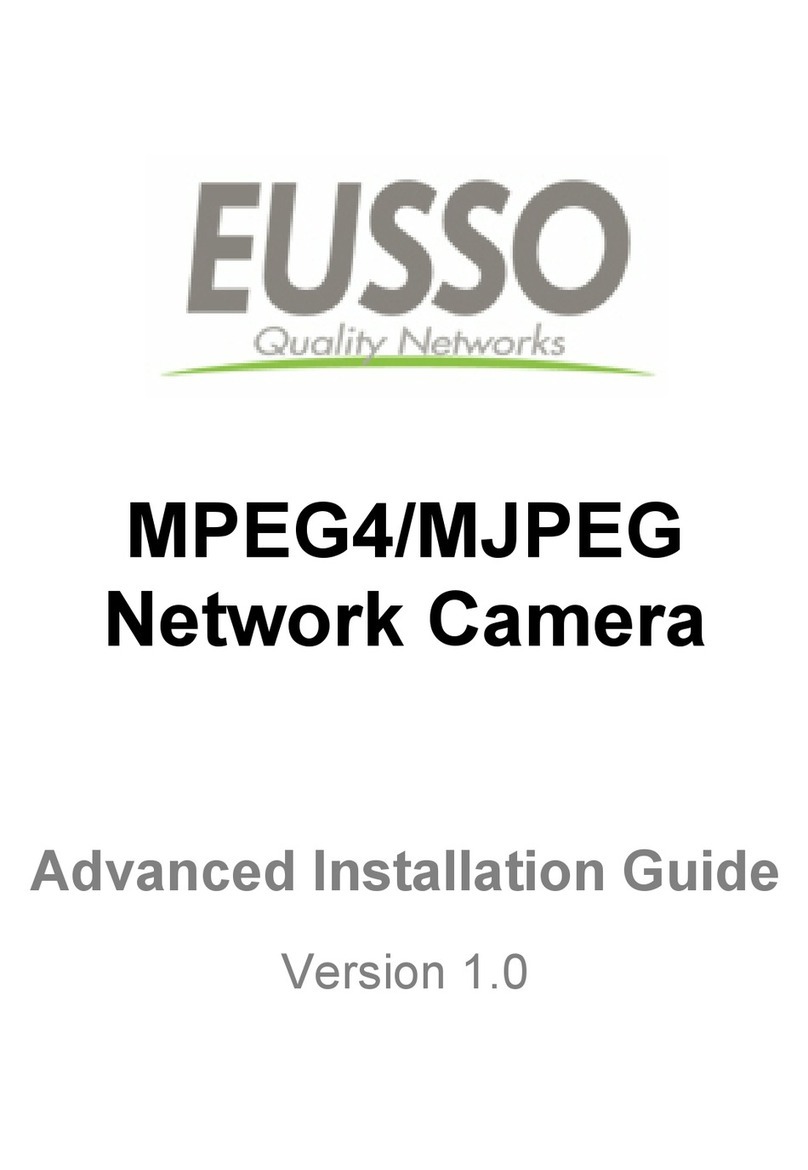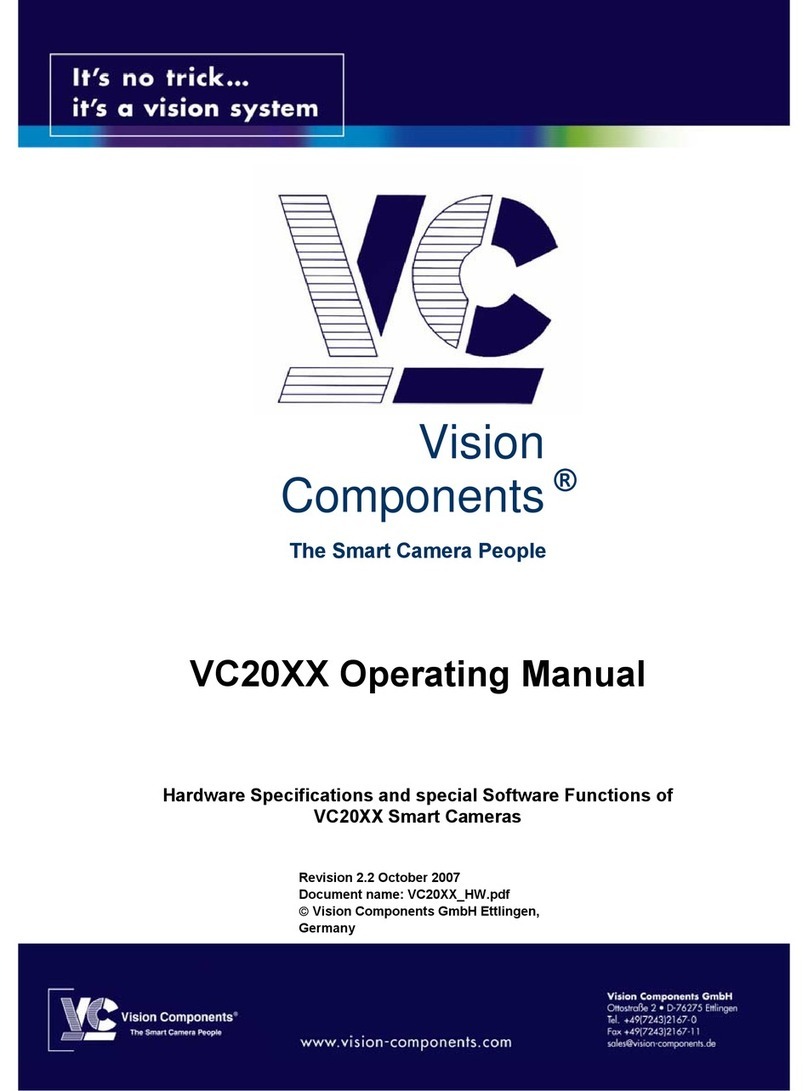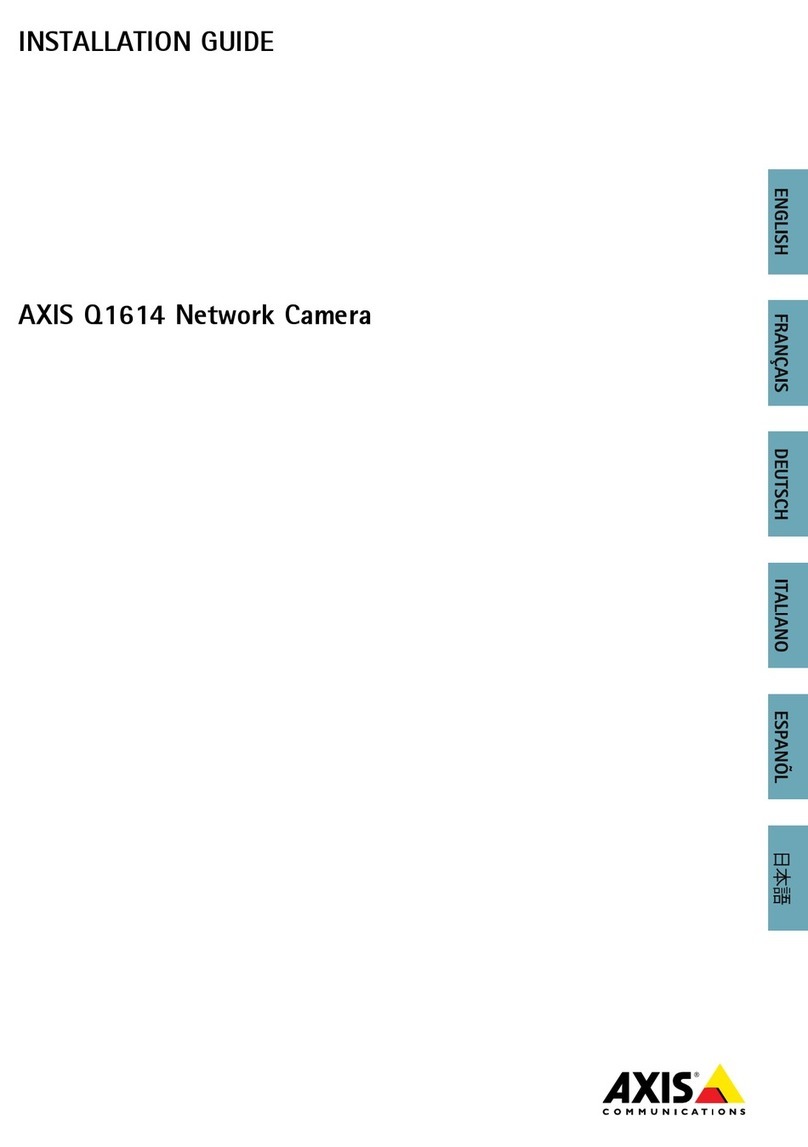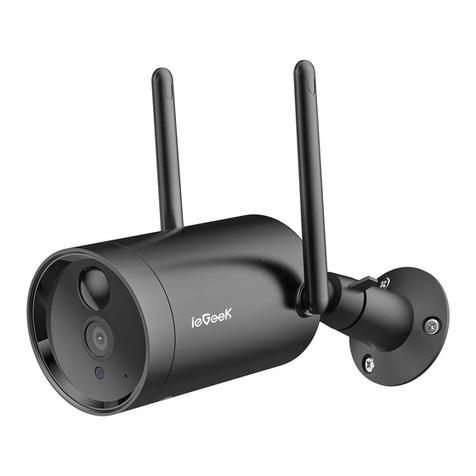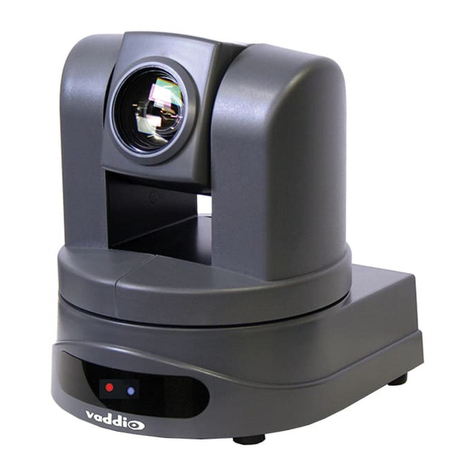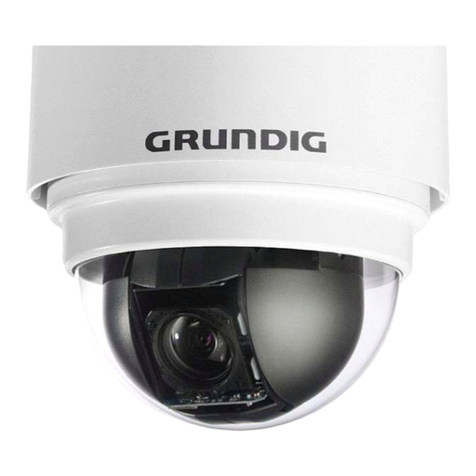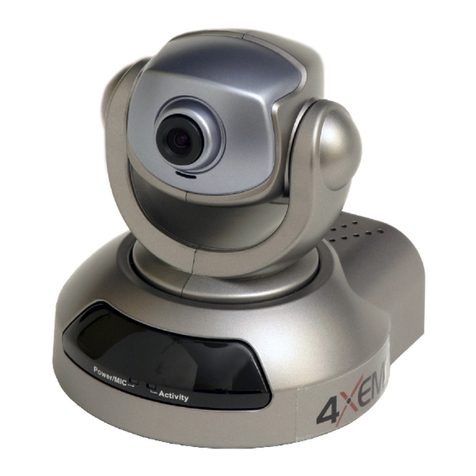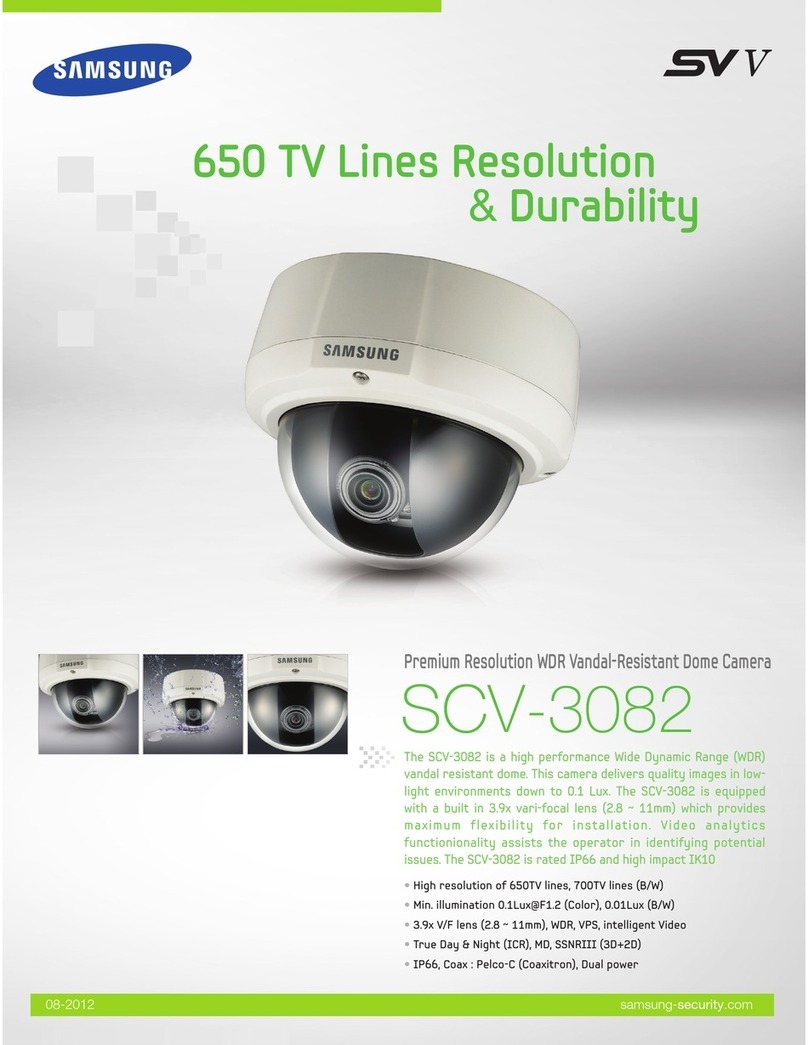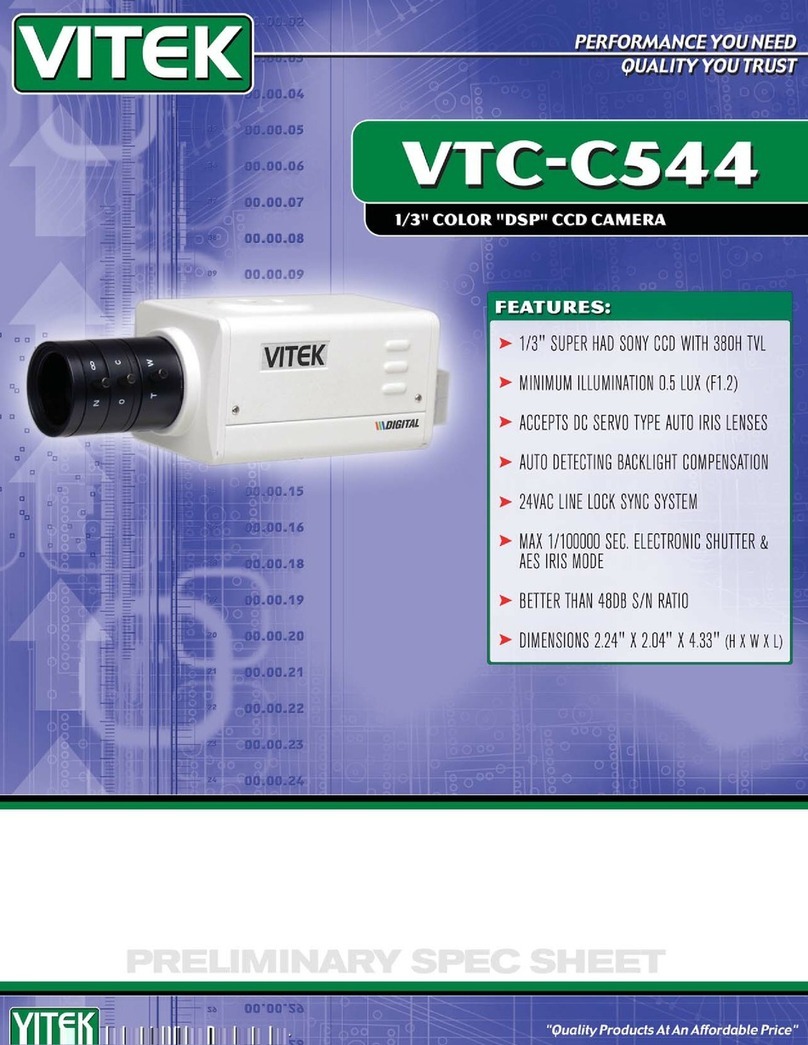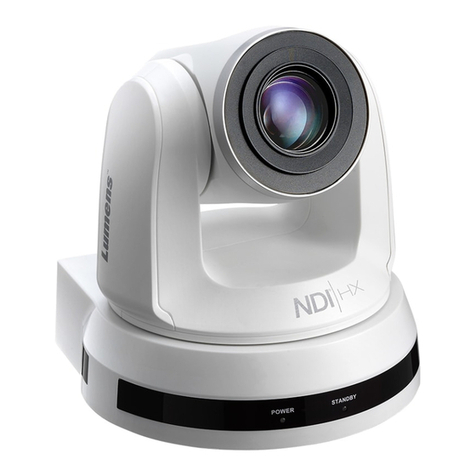Q: What is 20-bit technology and why is it important to
me?
A: Bosch‘s 2X DSP and proprietary wide dynamic range
(WDR) CCD sensor produce 20-bit image processing. It
allows the camera to see more in harsh lighting
conditions due to its superior WDR handling.
Q: What is the difference between NightSense and
Day/Night?
A: In NightSense mode, the camera turns off the DSP
color processing to achieve higher sensitivity (9dB
more). A Day/Night camera has an IR filter in front of
the CCD that switches automatically. The IR filter is
necessary for daytime color reproduction. Without the
IR filter, the camera can produce monochrome images
– and it has extended sensitivity because IR illumination
(artificial or background) is detected.
Q: If the application is not using IR illuminators,
should I use NightSense or Day/Night cameras? Why?
A: This depends on the presence of IR background
radiation. If there is no IR radiation, NightSense is the
preferred solution. If there is IR background illumination,
a Day/Night camera will generally provide higher
sensitivity and better images.
Q: What type of light source is best for good color
rendition, and how does that impact Day/Night camera
operation?
A: In Day mode, a Day/Night camera is the same as a
color camera. For both cameras, the best results come
from broad-spectrum white illuminators, such as
halogen spots and white light LED arrays. Good color
reproduction is also possible with incandescent and
fluorescent illuminators.
Q: Why does IR light give an out-of-focus image (vs.
visible light), and is there any way to correct that
problem?
A: Focus differences between IR and visible light are
caused by the lens. The refractive index of the lens glass
light is different for IR illumination and visible light. Lens
suppliers (including Bosch) offer IR-corrected lenses
that are designed to avoid a focus shift in cases of IR
illumination.
Q: Do all lens types have IR-corrected versions, such
as fixed focal length, varifocal, and motorized zoom?
A: In practice, not all versions are available as IR-
corrected lenses. Bosch offers a range of varifocal and
motorized zoom lenses to cover the vast majority of
applications.
Q: Which type of filter is in the optical path during
color operation?
A: In color mode, the camera has an IR filter in the
optical path. This filter is necessary to keep IR
background radiation from falling on the CCD, since
this would prevent good color reproduction.
Q: Which type of filter is in the optical path during
monochrome operation?
A: In monochrome operation, a “dummy” glass filter is in
the optical path. The sole function of this filter is to
make sure that the path length between the lens and
CCD is identical for color and monochrome operation.
Otherwise, there would be a loss of focus in either
operation.
Q: Can you explain the parameters that cause
switching from color to monochrome mode? (What
level of IRE or what percentage of IR scene
illumination? Will it oscillate between modes in certain
conditions?)
A: In automatic Day/Night switching mode, the video
level is the condition for switching into Night mode. The
actual switching level (20 to 80 IRE) is adjustable
through the setup menu. Switching to Day mode is
based upon meeting two criteria:The light level is above
a certain threshold, which is a fixed offset on top of the
level for switching into Night mode. The offset creates
hysteresis to prevent oscillation. Through the lens, the
camera determines whether the dominant light source is
IR. If it is IR illumination, the camera will not switch
back to Day mode. The benefit of this algorithm is that it
will not oscillate, even when strong IR illuminators are
used.
Q: Will the camera go back to color operation if the IR
light level is high enough to generate full video 1 Vp-p?
A: The light level for switching to Day mode is a
threshold (a fixed offset on top of the level for switching
into Night mode – it’s needed to create hysteresis to
prevent fluctuations). The offset is approximately 15 IRE.
Q: How does the camera differentiate between IR and
visible light?
A: The camera runs an algorithm using the white balance
circuitry inside the Dinion 2X DSP to detect whether IR
or visible light is the dominant light source. (White
balance circuitry is available since the camera is in
monochrome mode, and white balance operation is not
necessary.)
Q: What is the best wavelength of light to use when
selecting an IR illuminator?
A: The closer the infrared is to visible light, the higher
the camera’s sensitivity. However, visibility of the light or
light source to the human eye is also possible. Since IR
illumination ranges from 730 to 940 nm, a light source in
the 850 nm range usually provides the best of both
worlds.
FAQs for Dinion 2X Day/Night Cameras (LTC 0498 & LTC 0630)


